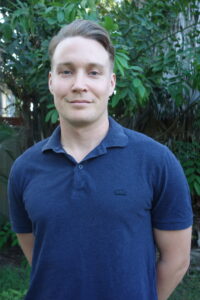The full paper can be found here.

Tell us more about yourself and the author team.
I am a musculoskeletal physiotherapist working in Emerald, Queensland, Australia, a rural town in the centre of the Central Highlands. I am also a director on the board for Central Queensland Rural Health, a profit for purpose charity that aims to enhance and develop health services in rural Queensland. I recently completed a Master of Health Practice at Auckland University of Technology; the review is the product of the final year of the Masters. Dr Daniel O’Brien and Dr Steven White are physiotherapists and senior lecturers at Auckland University of Technology; they supervised this project, providing valuable guidance and experience in designing and writing the review and turning it into a publishable article.
What is the story behind your study?
Like a lot of physiotherapists, my interest in ACLR rehabilitation came from personal experiences. Having undergone two ACL repairs myself following injuries sustained on the rugby field, the study was born out of a selfish need to further my knowledge and understanding in the area. While reinjury following ACLR is no doubt a complex and multifactorial puzzle, my own harsh realisation that I lacked the knowledge to truly prepare myself physically for a return to sport motivated me to reflect on my own practice.
Established research tells us that my experience of not being adequately prepared for a return to sport is widespread amongst people following ACLR. However, I wanted to delve into why this might be the case. While most people would agree that exercise, and more specifically resistance training, is an important aspect of rehabilitation, I saw the application of resistance training as an area that deserved more attention. I think the nuances of resistance training, like the prescription of exercise intensity, can be lost by focusing on less impactful, novel interventions. We (as physiotherapists and rehabilitation professionals) are often asking people to achieve certain milestones or fulfil particular criteria after ACLR before returning to sport. Still, We often do not have the knowledge or resources to help get them there. My hope was that this study would draw attention to an area that may be a significant factor contributing to current reinjury rates and drive some positive discussions and changes in our profession.
In your own words, what did you find?
Simply put, there is considerable variation in resistance training intensities used by ACLR rehabilitation studies exercise protocols. Additionally, these resistance training protocols do not reflect established strength and conditioning principles for the most part. A lot of the resistance training protocols utilise insufficient parameters to drive the adaptations required to adequately prepare people for the demands of sport. In particular, there appears to be a lack of examples of end-stage rehabilitation where you would expect a higher level of resistance training intensity and a subsequent focus on power development. I believe this is what we see clinically; if you speak to the average amateur athlete who has undergone an ACLR, their experience with rehabilitation often reflects this.
What was the main challenge you faced in your study?
The greatest challenge was synthesizing a coherent and useful discussion by gathering data across various studies that assessed different outcome measures and reported them in different ways. In an ideal world, a review would complete a meta-analysis of studies to identify the most effective resistance training parameters against return to sport outcome measures. However, this is incredibly difficult with various studies’ wide range of outcome measures and reporting methods.
If there is one take-home message from your study, what would that be?
Resistance training is a cornerstone of ACLR rehabilitation and a key tool (possibly the key tool) clinicians use to prepare people for the rigours of their chosen sport or activity. Resistance training protocols deserve a nuanced and well-thought-out approach to achieve the best possible results.